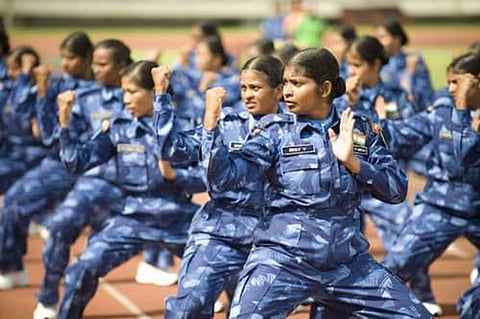
- Home
- न्यूजग्राम
- India
- World
- Politics
- Entertainment
- Culture
- Lifestyle
- Economy
- Sports
- Sp. Coverage
- Misc.
- NewsGram Exclusive
- Jobs / Internships

Freedom and liberty are two expressions that come to mind when one thinks of the word independence. India's struggle for freedom entails myriad men who starved, fought, argued and defeated the Britishers. But while all this was happening, where were the women? What were they doing?
Then..
The pre-independent India is notorious for its anti-women practices like Sati, Child marriage and the Purdah system. For men, women were either harbinger of offspring or a dutiful attendant to them and their family. However, though no kind of Feminism broke out in that epoch, yet many women took that one step that made a significant difference to the stature of women in India.
With Congress being initiated in 1885, women started participating in their sessions. While ten women attended the fourth session of Congress in Bombay in 1889, the count started escalating each time. Swarna Kumari became the first woman to speak from Congress' platform, she was further joined by Pandita Ramabai, Manikjee Arbtejee and Shevanti Bai.
Not many know about Swarna kumari Devi, sister of Rabindranath Tagore who started the Ladies Theosophical
Society (a multi-religion association of women) in 1882 and later became a member of the INC. Her daughter, Sarla Devi was an active member of the nationalist militant struggle and started training women in lathi and sword in 1903.
In 1916, the Begum of Bhopal established the All India Muslim Women's Conference with her primary aim being education of women. She also directed her attention to the eradication of the complex polygamy system.
Within the domestic precincts, women wove Khadi and other indigenous goods in order to boycott the foreign products and in the so-called ambit of men, they too made speeches and wrote articles to disseminate the freedom movement. Kumudini Mitter, a nationalist published revolutionary ideas through Suprabhat, a Bengali magazine. Sarla Devi opened Lakshmi Bhandar, a stall to popularise swadeshi goods.
Movements such as Bardoli Satyagrah and Civil Disobedience brought women from different parts of India together to fight the dominion of the English men. In fact, the civil disobedience movement in Punjab was launched by 5000 women.
While Gandhi and other "men" are famous for going to jail while revolting, there was Sucheta Kriplani, in-charge of the women's wing of All India Congress Committee since 1939 who got arrested in civil disobedience movement. Usha Mehta, in Bombay operated an underground radio station and broadcasted regular news about Congress from it. She was later arrested and imprisoned for 4 years.
At that time when Annie Besant was fighting on the front, women like Sarla Devi, Kamladevi Chattopadhyay and Usha Mehta were fighting in other ways possible to carve a niche for the natives and especially women.
Now..
With gender equality propagandas being portrayed though different advertisements, texts and real life incidents one cannot fail but mark the progress and emancipation that women have achieved for themselves today.
While school textbooks promulgated Kalpana Chawla, Sheila Dikshit and Sania Mirza as role models for the
upcoming generation, every household in India now has a hero, rather heroine in it.
It is not just self-motivation that fuelled the progress of women. With various amendment in the constitution laws and Acts being introduced, the stance of women ameliorated significantly. For instance, The Hindu Succession Act (1956) empowers a woman by making her an equal and a legitimate inheritor of the family property. The Equal Remuneration Act of 1976 states that there be no difference in the wages of men and women.
A thorough patriarchal nation like India is getting a fresh taste of feminism. Ranging from matriarchal families to women like Chanda Kochhar who run affluent business, this nation is accelerating not just its GDP but its gender roles as well.
Women are not fighting men,they are fighting their supremacy which has been established allegedly. While India got its independence 68 years back, a majority of women in India are still under the oppression of not Englishmen, but their own men.
